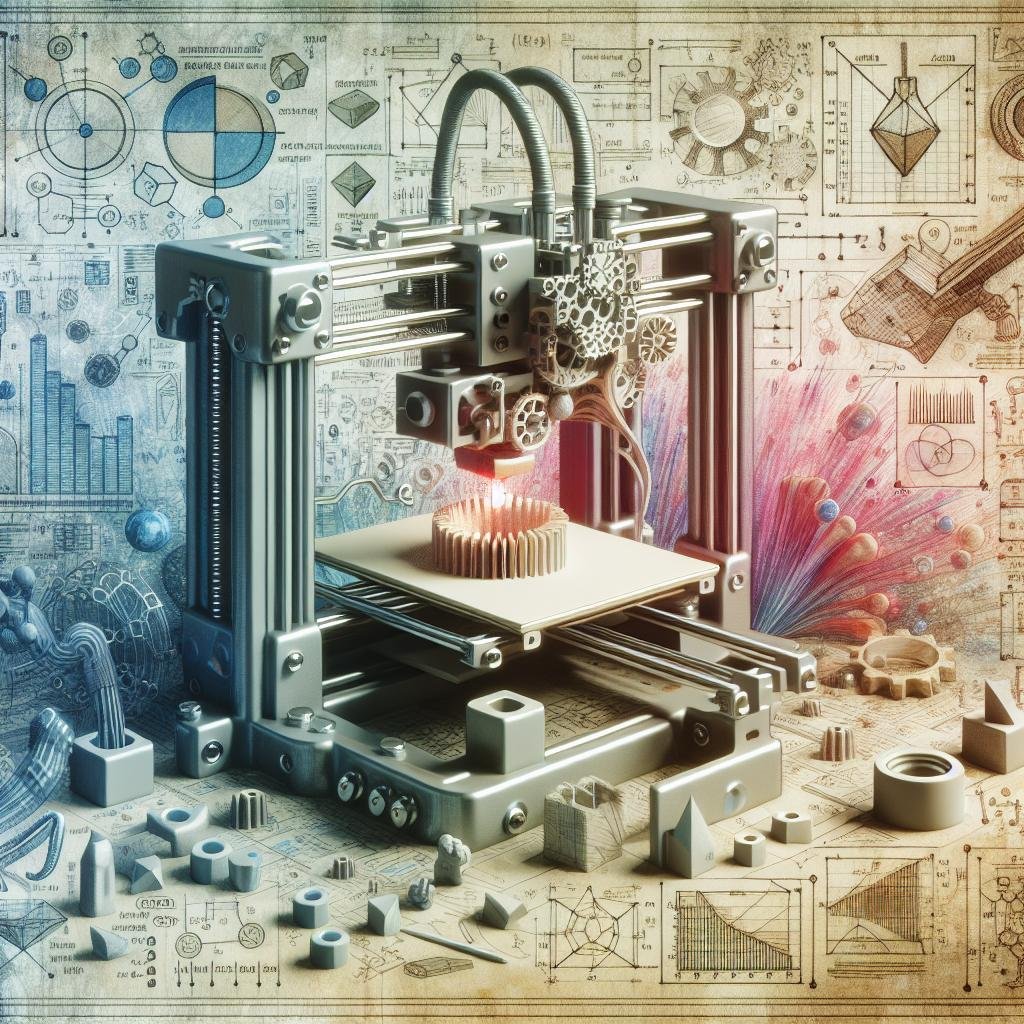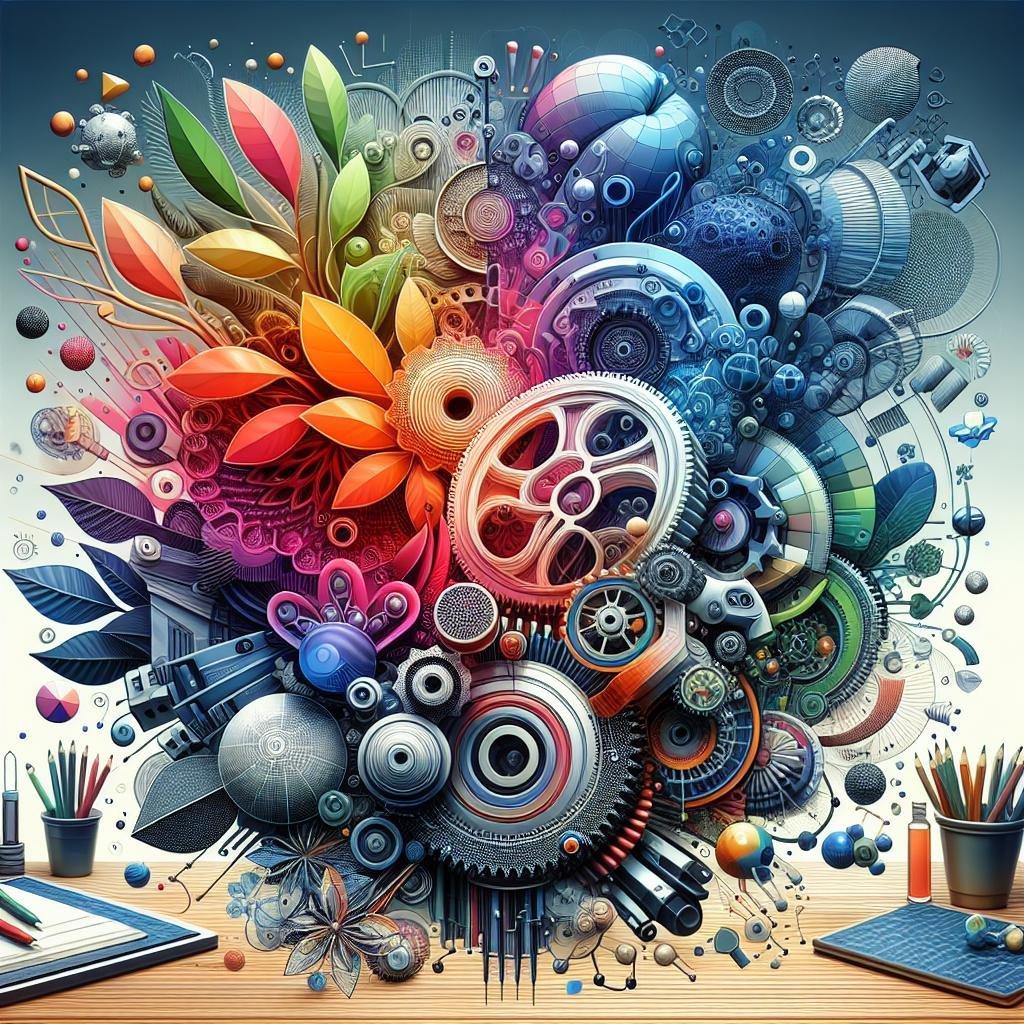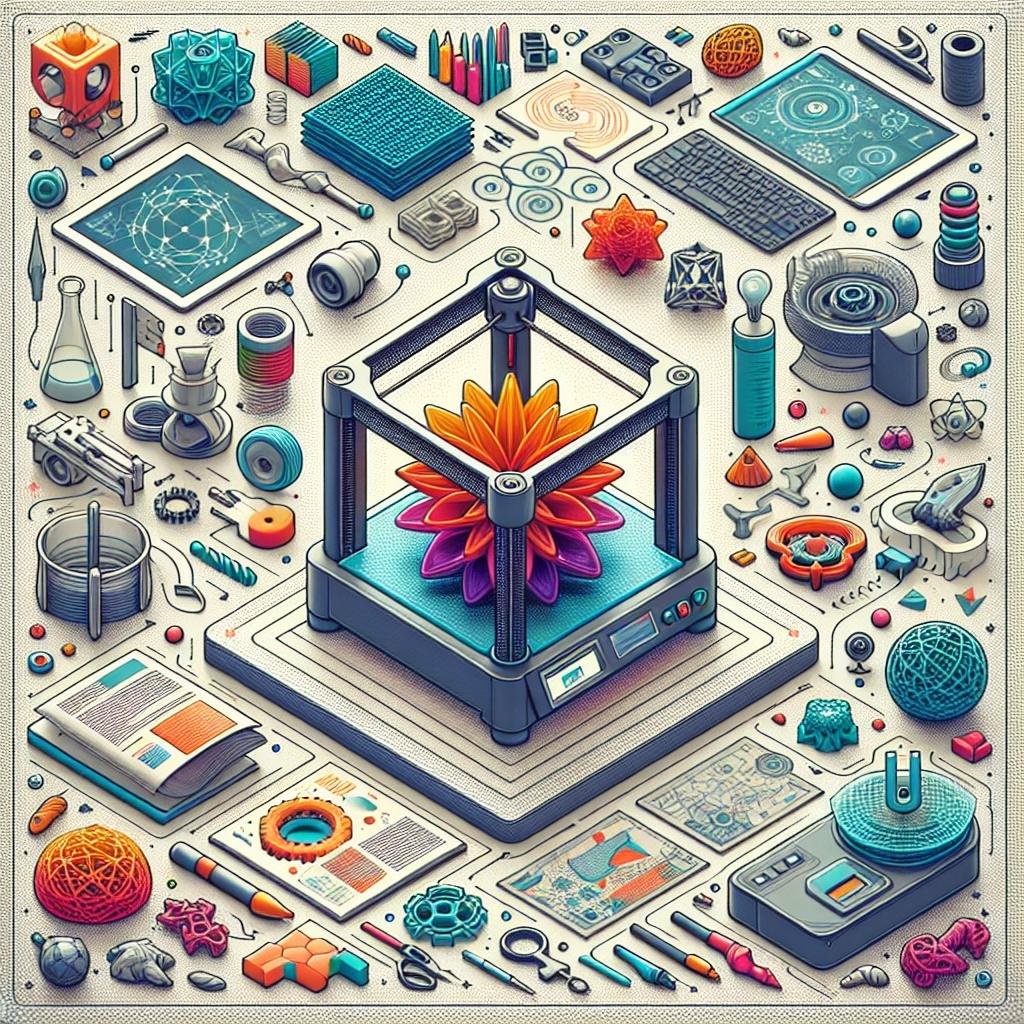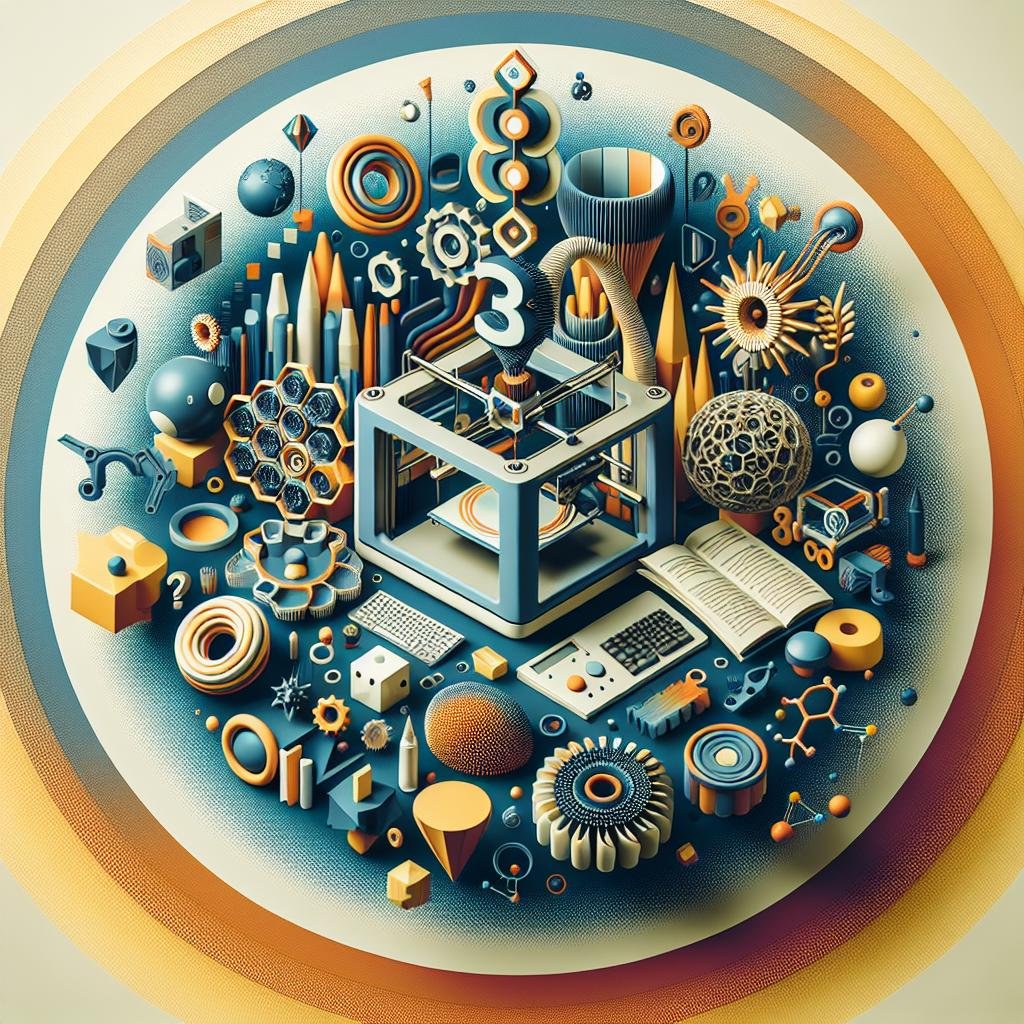In the ever-evolving landscape of modern technology, 3D printing stands out as a dazzling beacon of innovation, transforming the way we conceive, design, and create. From intricate art pieces to critical components used in aerospace engineering, the possibilities seem almost limitless. Yet, for many hobbyists and professionals alike, the quest for crafting prints that are both durable and functional can feel like navigating a maze of endless trial and error. Fear not, fellow creators! In this article, we’ll embark on a friendly journey through the world of 3D printing, uncovering the secrets to making your prints stand the test of time. Whether you’re a novice printer, eager to learn the ropes, or a seasoned pro searching for fresh insights, these strategies will equip you with the tools to transform your ideas into robust, tangible realities. Buckle up as we dive into the fascinating art of creating 3D prints that are as reliable as they are revolutionary.
Mastering Material Selection for Longevity
In the art of 3D printing, choosing the right material is the golden ticket to achieving prints that are both durable and functional. Each filament comes with its unique properties, dictating not only the longevity but also the performance of your final product. The basics cover common filaments such as PLA, known for its ease of use and vibrant colors, while lacking in resilience to heat, and ABS, which offers strength and more temperature resistance but is trickier to print successfully without proper ventilation. Diving deeper, explore PETG, which combines the best of both worlds—toughness and ease of use, making it suitable for rough use applications. Don’t overlook Nylon, which gives superior strength and flexibility, ideal for prints needing high mechanical resilience.
Consider your project requirements carefully and match them with the right material. Here’s a handy guide:
- For Prototyping: Go for PLA, for quick and easy builds.
- Functional Parts: ABS and PETG for robustness and temperature resistance.
- High Wear Items: Choose Nylon for flexibility and strength.
When planning your next project, consult this concise comparison to help guide your decisions:
| Material | Strength | Ease of Use | Heat Resistance |
|---|---|---|---|
| PLA | Low | High | Low |
| ABS | High | Medium | High |
| PETG | Medium | High | Medium |
| Nylon | Very High | Low | Medium |

Design Tricks for Enhanced Print Functionality
To elevate the durability and functionality of your 3D prints, incorporating strategic design tricks is key. Layer height plays a crucial role in defining the resolution and strength of your prints. Opt for a smaller layer height for objects requiring finer details and greater strength—this translates to more layers, ensuring enhanced durability. Infill patterns and density should not be overlooked. Utilize strong patterns like cubic or gyroid at optimal densities, which not only bolster internal support but also mitigate material wastage. You can rely on strategic wall thickness adjustments for increased sturdiness; thicker walls naturally provide better resistance to impact and wear, safeguarding the integrity of your designs.
Consider integrating purposeful supports and overhangs in intricate models. These can be the deciding factors in reducing print errors and enhancing aesthetic appeal. Aim for a thoughtful selection of support structures, such as tree-like supports that offer stability without being intrusive. Additionally, adopting adaptive function testing through modular parts can significantly aid in design optimization. This involves printing in sections, allowing for testing and adaptations without reprinting the entire model. Material choice is also pivotal; enjoy the cure of varied plastics or delve into composites with metal or wood fibers for added resilience and functionality. By focusing on these design elements, you’re not just building objects but creating masterpieces with practical utility. Here’s a quick overview:
| Design Element | Benefit |
|---|---|
| Layer Height | Improved Detail & Strength |
| Infill Patterns | Structural Support |
| Wall Thickness | Impact Resistance |
| Support Structures | Error Reduction |
| Material Choice | Durability Enhancement |

Optimizing Print Settings for Durability
When it comes to crafting 3D prints that stand the test of time, fine-tuning your print settings is pivotal for achieving resilience. To start, focus on selecting the optimal material based on your project’s requirements. Filament choices like PLA, ABS, and PETG each offer unique properties; PLA provides ease of use but might lack strength, while ABS and PETG can enhance durability when utilized correctly. Additionally, tweaking your layer height can significantly impact the print’s mechanical strength. Lower layer heights often mean increased strength, as more layers contribute to a thicker wall and higher compression, but the time trade-off must be managed. Consider experimenting with your infill pattern and density to further bolster strength. Honeycomb or grid patterns might be more aesthetically pleasing, but a cubic pattern delivers remarkable durability by distributing stress more uniformly. Balancing infill around 20-50% often strikes a good balance between robustness and material efficiency.
Emphasizing adhesion on the print bed is another crucial factor for seamless, functional prints. Bed adhesion settings like adding a brim or raft can cater to the stability of prints with more extended footprints or intricate designs. This consideration helps prevent warping and enables a successful build from base to top. Moreover, adjusting the print speed can make a significant difference. While high-speed settings might seem tempting, reducing print speed, particularly on the initial layers, can enhance precision and interlayer bonding, thus fortifying the print’s overall structure. Temperature calibration for both the nozzle and the bed ensures the material is extruded precisely, which also aids in achieving a long-lasting print. An appropriately calibrated printer furnishes consistent results, reducing the risk of compromised layers and weak spots. Here’s a quick summary:
- Choose the right filament: PLA, ABS, PETG
- Optimize layer height and infill pattern
- Utilize brim or raft for better adhesion
- Adjust print speed for better bonding
- Calibrate nozzle and bed temperatures properly

Post-Processing Techniques for Solid 3D Prints
Achieving a flawless finish and enhancing the durability of your 3D prints involves a variety of innovative post-processing techniques. To begin with, sanding can smooth out the layer lines and imperfections left by the printing process. Use varying grades of sandpaper, starting with coarser grains and progressing to finer ones, to achieve a smooth surface. Following sanding, priming and painting your model not only improve appearance but also add a protective layer that enhances durability. For a glossy finish, apply a clear coat after painting. Another effective strategy involves vapor smoothing, where prints made from materials like ABS can be exposed to acetone vapor, resulting in a sleek, polished surface. Remember to carry out this process in a well-ventilated area for safety.
In addition to surface finishing methods, structural reinforcement is vital for creating functional 3D prints. Consider infiltration techniques, such as soaking your print in an epoxy resin that fills tiny gaps, significantly enhancing strength without compromising detail. Adding metal inserts for screw mounting and using threaded inserts can offer robust solutions for functional components that endure stress. Below is a quick reference table summarizing some popular techniques and their primary benefits:
| Technique | Primary Benefit |
|---|---|
| Sanding | Improves surface smoothness |
| Priming & Painting | Enhances appearance and protection |
| Vapor Smoothing | Creates a polished finish |
| Epoxy Infiltration | Increases structural strength |
| Metal Inserts | Enhances mechanical functionality |
Q&A
Article Title: Crafting Excellence: The Best Ways to Create Durable and Functional 3D Prints
Q1: What are the first steps to ensure durability in 3D printing?
A1: To kick off your 3D printing journey on the right foot, start with choosing the right material. Different projects demand different materials, and each has its own strength and flexibility. PLA is great for beginners, while ABS and PETG are excellent for more robust projects. Next, tweak your printer settings like layer height and shell thickness; these significantly impact your print’s resilience. Investing time in calibrating your printer can make all the difference between a fragile and sturdy masterpiece!
Q2: How can infill patterns affect the strength of 3D prints?
A2: Ah, the infill pattern—often underestimated but so crucial! Think of it as the bone structure for your creation. Different patterns like honeycomb, grid, or gyroid don’t just look cool, they distribute stress across your print differently. For durability, consider denser patterns like triangles or hexagons. They provide excellent load-bearing capabilities without requiring a ton of extra material. A little experimenting with infill can transform your designs from flimsy to formidable.
Q3: Are there post-processing techniques that enhance the durability of 3D prints?
A3: Absolutely! Post-processing isn’t just for aesthetics; it’s a vital step for durability too. Sanding your prints can remove imperfections that may cause weaknesses. Applying a coat of epoxy resin can seal the print, offering protection against wear and tear. Don’t forget about annealing—carefully heating your print to a certain temperature and then cooling it slowly can strengthen materials like PLA, enhancing their resistance to stress and heat.
Q4: What role does design play in creating functional 3D prints?
A4: Design, my friend, is the blueprint of success in 3D printing. Incorporating features like fillets and chamfers can significantly boost a print’s strength by reducing stress concentration points. Try using CAD software to simulate stress tests on your design before printing; it’ll give you insights into potential weak spots. Remember, a well-thought-out design is like a good recipe—a crucial ingredient for a delectable outcome!
Q5: How can one ensure their 3D printer is always in tip-top shape for durable printing?
A5: Treat your 3D printer like a loyal companion. Regular maintenance is key; think of it as a spa day for your machine. Clean the build plate frequently, ensure the nozzle is clear of debris, and re-calibrate periodically. Update your printer’s firmware to access the latest features and fixes. By keeping your printer happy and healthy, you’re laying the groundwork for strong, successful prints that can stand the test of time.
Q6: Are there any common mistakes to avoid for durable 3D printing?
A6: Certainly, even seasoned creators can trip up now and then. Common pitfalls include neglecting to level the print bed, which can lead to adhesion problems. Overheating the filament might cause structural weaknesses, so follow material guidelines closely. Another trap is using excessive speed; while faster prints can be tempting, they often sacrifice quality and strength. Patience and precision are your allies in the quest for durability!
—
By following these friendly tips and tricks, you’re not just creating 3D prints—you’re building masterpieces that are as tough as they are terrific. Happy printing!
In Conclusion
As we wrap up our exploration of crafting durable and functional 3D prints, it’s crystal clear that this innovative journey is both an art and a science. Whether you’re a seasoned engineer or a passionate hobbyist, the magic lies in blending the finesse of technique with the robustness of design. Remember, every layer you build is a step toward turning a flicker of imagination into a tangible masterpiece.
So, equip yourself with these insights, experiment fearlessly, and don’t shy away from pushing the boundaries of what’s possible. The world of 3D printing is ever-expanding, and with your creativity and ingenuity, you become the architect of tomorrow’s marvels. Here’s to printing your mark on the future—one durable piece at a time. Happy printing!

